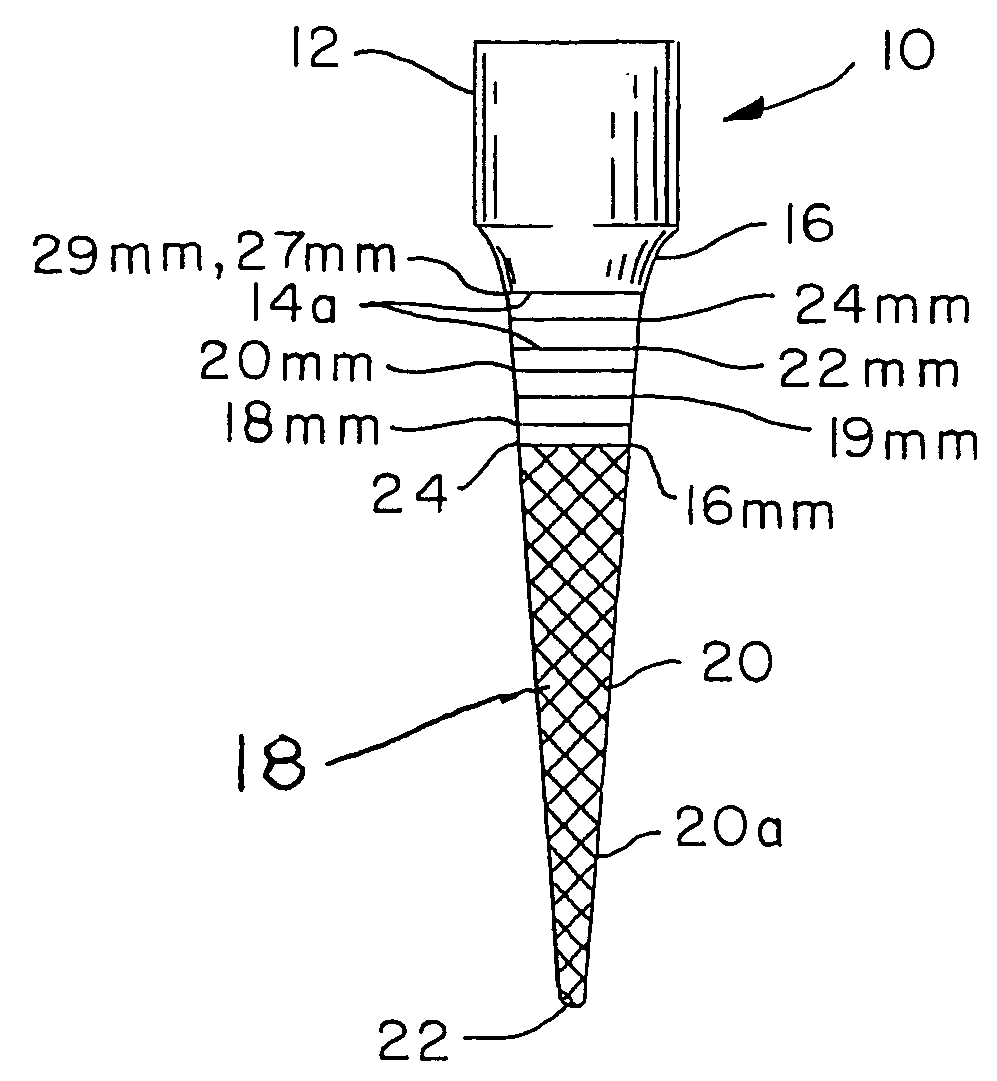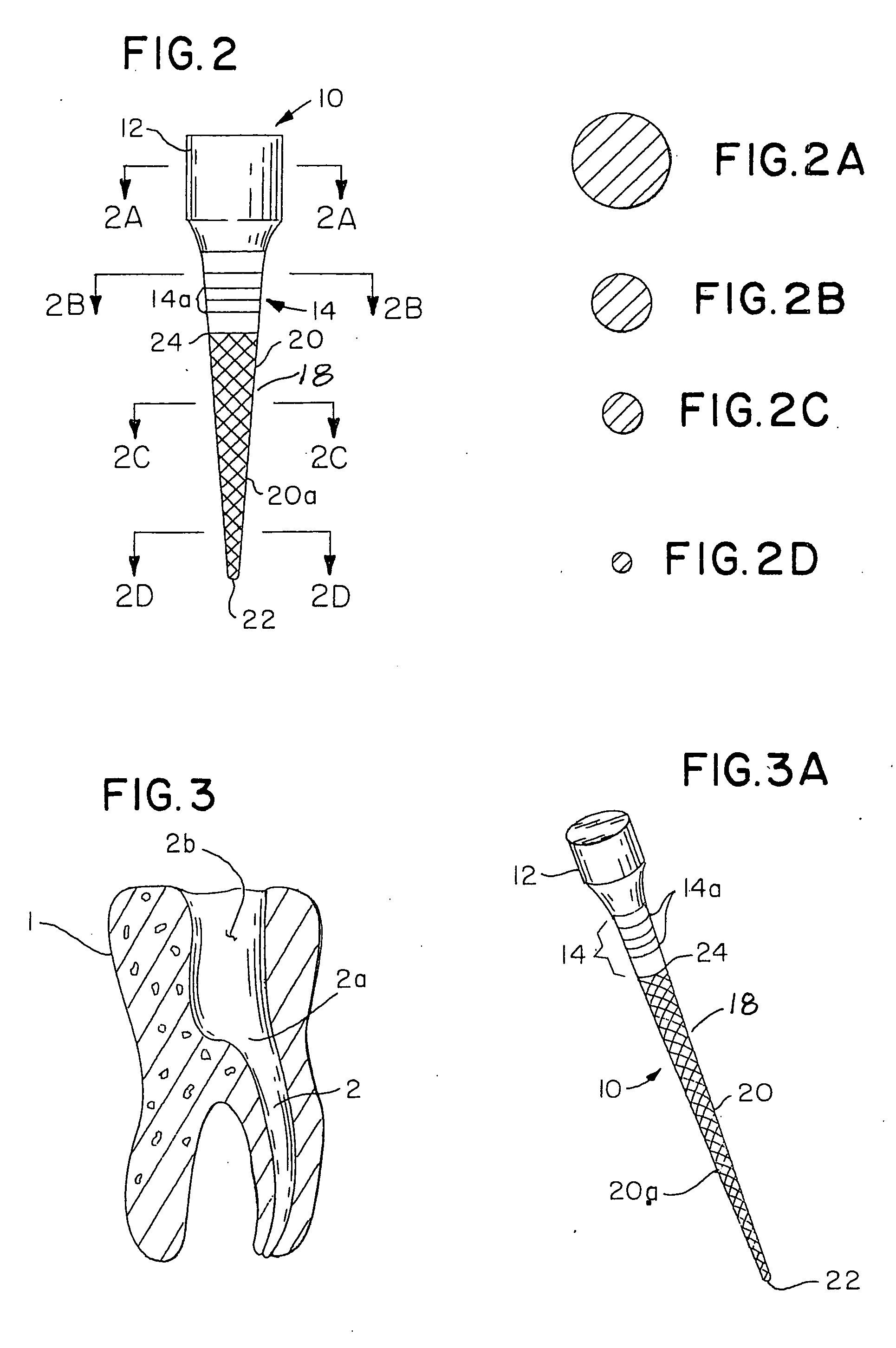The most common cause of failure of root canals is bacterial
contamination either through microleakage or
contamination during the process.
Initially silver points were used to fill the canal space, but due to leakage problems associated with their shape and the material itself, this technique was abandoned.
However, grasping the obturator manually often obstructs the view of the delivery process of the obturator into the root canal site.
Using a separate tapered carrier core for introducing gutta percha wrapped around it often results in uneven dislodging or stripping of the heated gutta percha from the obturator instrument.
Although popular, this technique was subject to voids as a result of the lateral condensation filling and inaccuracies of
adaptation to the root
canal wall.
It is very difficult with lateral condensation filling to achieve a three dimensional seal of the root
canal system.
Unfortunately, heated gutta percha flows only a few millimeters and shrinks upon cooling, thereby not filling the root canal space it was intended to fill and seal.
While seemingly attractive, heated gutta percha has its limitations.
Shrinkage upon cooling and being technique sensitive are two of the limitations.
The success of this technique had the limitation of being dictated by the success of the preparation.
If the taper of the preparation was not sufficient, the tooth structure could strip (denude) the gutta percha from the carrier, thereby reducing the success of the technique.
A carrier that has a portion stripped of gutta percha increases the risk of bacterial
contamination and therefore reduces the prognosis.
Recently, Endodontics has been witness to numerous heated gutta percha techniques that all have the common problem of shrinkage.
Additionally, some of these techniques are technically sensitive making the use of
thermoplastic techniques particularly challenging for the general practitioner.
This method had numerous problems such as lack of control of the material, and serious shrinkage that resulted in leakage and
bacteria contamination.
Revisement challenges were also a factor if the root canal procedure had to be re-treated.
However, the lack of synchronicity between the root canal preparation and the cone is a problem, as well as the cements, which do not adapt and bond well to the walls of the preparation or to the gutta percha itself.
With the use of the Ultra Dent ENDO-EZE® preparation and the AET™ technique with the ENDO-REZ® resin sealer, there is inconsistency between the root canal preparation and the gutta percha used to fill the root canal space.
Therefore, the lack of a precise match between the preparation and the gutta percha itself results in either excess
cement (that will shrink) or the gutta percha cone can hang up in the coronal part of the canal and therefore, not reach the end of the root canal preparation intended to be sealed by the gutta percha.
This can result in leakage and bacterial contamination thereby reducing the prognosis of the case.
This potential problem is the result of a lack of synchronicity between the root canal preparation and the gutta percha cone.
Furthermore, the restoration of endodontically treated teeth has been subject to a lack of synchronicity between the root canal preparation and a prefabricated post.
The consequence of this disparity is less than ideal retention of the post, as well as a weakening of the root when posts of greater dimension, or different shapes, are utilized, thereby compromising the long-term success of the restoration and the tooth.
An additional concern of the restoration of endodontically treated teeth is the lack of a proper coronal seal.
The lack of a three dimensional seal (on top of the gutta percha in the root canal) can result in an ingress of bacterial components.
Bacterial contamination will result in failure of the root canal and remains a serious concern in modern endodontics.
 Login to View More
Login to View More  Login to View More
Login to View More 


